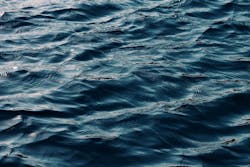US ACE Nationwide Permits Include Water Reclamation & Reuse
On December 27 2021, the U.S. Army Corps of Engineers issued a final nationwide permit (NWP) rule streamlining a permitting process applicable to both the government and the regulated community.
Projects with minimal, adverse environmental impacts separately or on a cumulative basis can receive authorization from the Corps to discharge dredged or fill material into Waters of the United States (WOTUS) through the streamlined NWP process. Under this rule, the Corps reissued 40 existing and one new NWP.
The 41 December NWPs coupled with 16 NWPs issued on January 13, 2021 authorize a total of 57 NWPs. Activities previously authorized under the 40 reissued NWPs may continue to be authorized if the activities commenced fulfill one of three requirements
- It must be under contract to commence in reliance on a NWP, provided the activity is completed within a year of the NWP's expiration; or
- The project proponent has a verification letter stating that an activity is covered by an NWP and will remain valid until the expiration date specified in the letter if the NWP is reissued without modification; or
- The activity complies with any modification to the NWP.
Section 404 Permits under Clean Water Act
Project proponents require a Section 404 permit under the Clean Water Act (CWA) when a project discharges dredge or fill material into WOTUS components such as rivers, streams, or wetlands. The NWPs allows project proponents who meet the requirements of the NWP the opportunity to receive permit decisions with minimal delay and paperwork for activities involving infrastructure in jurisdictional waters. This includes — but is not limited to — maintenance, bank stabilization, aquatic habitat restoration, cleanup of hazardous and toxic waste, maintenance of flood control activities, and water reuse facilities.
The Corps' goal in updating the NWPs was to increase regulatory efficiency while balancing protection of the natural aquatic environment.
The NWP program can save significant time and costs compared to authorization by means of individual Section 404 permits. For example, in 2018, the average time to process a standard individual permit application was 264 days as compared to 45 days under the NWP program. The Corps contends that the revisions, additions, and improvements to the NWPs are consistent with the Corps' commitment to evaluate minor activities efficiently while protecting the Nation's aquatic resources.
The final NWPs included timely streamlined permitting opportunities for critical water projects in light of unprecedented drought and water supply challenges. For example, NWP 58 applies to projects involving the construction, maintenance, and repair of utility lines related to water and "other substances," including potable water, sewage, stormwater, and wastewater.
More significantly, NWP 59 applies to projects associated with constructing, expanding, and maintaining water reclamation and reuse facilities so long as the discharge of dredged and fill material does not cause a loss of more than half an acre of WOTUS. Water reclamation and reuse facilities can be "attendant features," or accessory features constructed in conjunction with residential developments (NWP 29), commercial and industrial developments (NWP 39), agricultural activities (NWP 40), and recreational facilities (NWP 42). Accordingly, the Corps believes NWP 59 will provide clarity to the regulated community and streamline the authorization process where the water reclamation and reuse projects are stand-alone facilities rather than attendant features.
Water Reclamation & Reuse Facilities Impact
Water reclamation and reuse facilities are important tools for conserving water, addressing changes in water availability and water demand, and adapting to the effects of climate change.
The new NWP 59 may provide opportunities for groundwater recharge and replenishment projects without restrictions on the sources of water being recharged, including water from outside of the watershed. NWP 59 also authorizes temporary fills necessary to construct the water reuse project and attendant features. These facilities may include landscaped areas to improve water infiltration, and constructed wetlands to improve water quality.
How to Qualify for an NWP
Pre-construction notification is required for all activities authorized under NWP 59. To qualify for any NWP, a project proponent must submit a pre-construction notice to the Corps if any listed species or critical habitat is in the vicinity of or might be affected by the project. The Corps will then determine whether formal consultation is required under section 7 of the Endangered Species Act.
The new and reissued NWPs clarify that the jeopardy assessment should analyze both direct and indirect effects of the project, including those effects that are a "reasonably foreseeable result" of the action. In addition to a pre-construction notification, a project must result in no more than minimal individual and cumulative environmental effects to receive authorization under NWP 59.
Determining the environmental effects of a project requires an evaluation of the proposed losses of stream bed in conjuncture with the other losses to WOTUS caused by the discharges of dredged or filled material. The project proponent must take appropriate steps to ensure normal downstream flows are maintained, and to minimize flooding to the maximum extent possible.
District engineers tasked with reviewing the NWP application have discretion to require mitigation if they determine its necessary to ensure the activity will result in no more than minimal adverse environmental effects. Where a project will result in more than minimal adverse environmental effects even with mitigation, the district engineer may deny authorization under NWP 59, and require an individual permit.
What Can the Army Corps Regulate?
Although the Corps regulates discharges of dredged or fill material into WOTUS for the construction, expansion, or maintenance of water reclamation and reuse facilities, the Corps generally does not have the authority to regulate the operation of these facilities authorized by the NWP.
For example, the Corps does not have the authority to regulate releases of water to recharge or replenish groundwater, to regulate the mixing of water from various sources, or to regulate the movement of water between watersheds. Accordingly, project proponents may be subject to permit requirements of the Underground Injection Control Program, administered under the Safe Drinking Water Act by the U.S. EPA, state regulations (such as California's Porter-Cologne and Sustainable Groundwater Management Acts), or local regulation.
Pros & Cons of the Reissued NWPs
While the regulated community praises the new and reissued NWPs for the economic and timesaving benefits, environmental advocates and other opponents criticize the Corps' prioritization of the interests of regulated entities over protection to endangered species and the natural aquatic environment.
Opponents contend that the NWP program allows for a virtually limitless number of discharges of dredged or fill material to the nation's waters and wetlands with destructive activities such as coal mining and oil and gas pipeline construction. The cumulative effects of the activities permitted pursuant to the NWPs, opponents argue, will result in more than minimal impacts on the natural aquatic environment.
The new and reissued permits are effective until March 14, 2026. Between now and 2026, the new and reissued NWPs will undoubtedly be affected by revisions to the definition of WOTUS, which expires this year.
The Corps and U.S. EPA proposed a definition similar to the pre-2015 definition, and the Biden Administration is expected to propose revisions reflecting additional stakeholder engagement and recent scientific developments.


